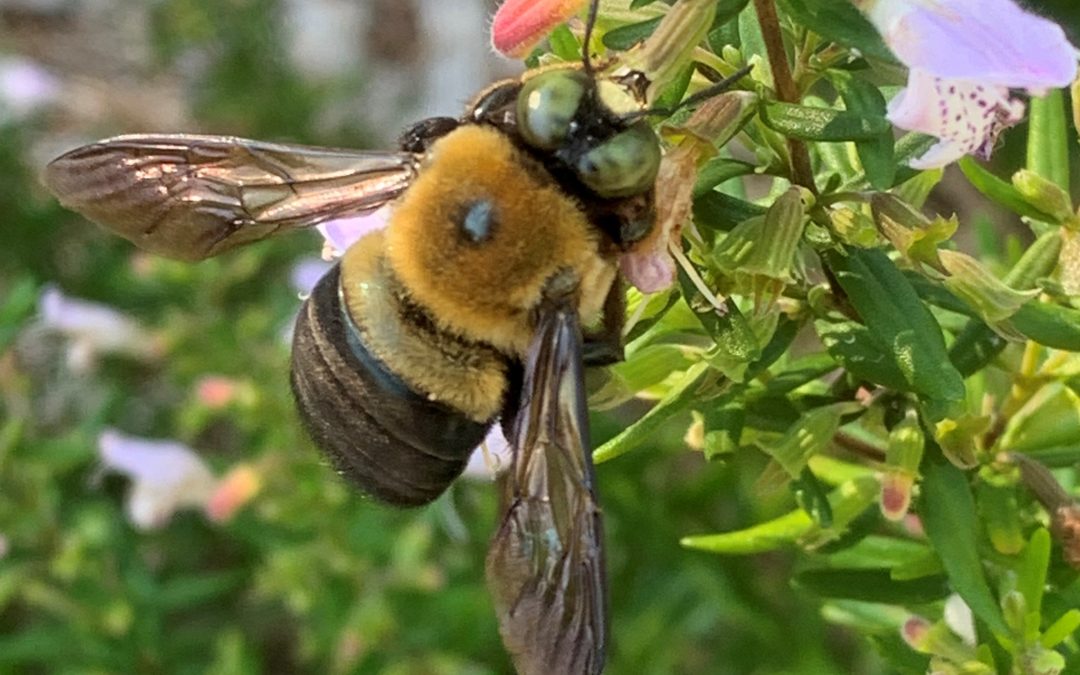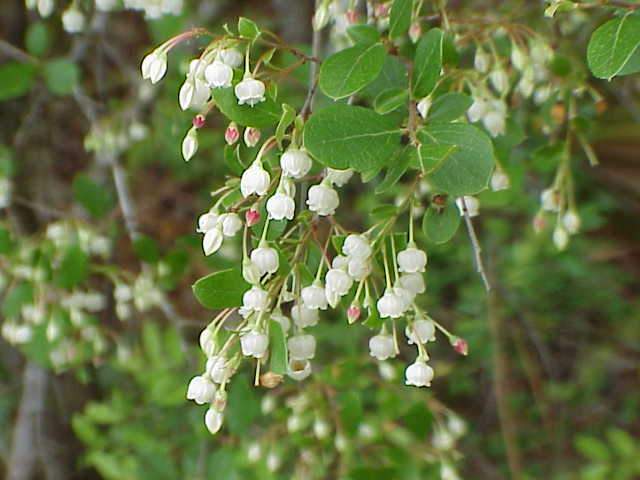
by Beth Bolles | Oct 17, 2024
UF IFAS Extension Escambia County was recently able to offer a native tree and shrub giveaway to our community. A county partner had some grant funding remaining and chose a nice selection of plants grown by a local native nursery. After seeing the plant selection, I was really excited that a few participating homeowners had the opportunity to take home one of my favorite native plants, the Sparkleberry, Vaccinium arboretum.
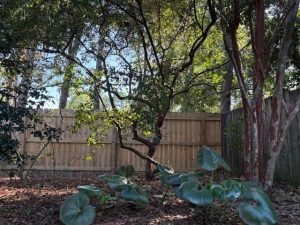
The Sparkleberry in the corner of my back yard. Photo by Beth Bolles, UF IFAS Extension Escambia County
Twenty-three years ago, I saved a sparkleberry on my new home lot because I loved this native tree. It has interest in all seasons in my opinion, including flowers, small fruit for wildlife, attractive bark, and an interesting shape as it matures. It has been a slower growing tree than others in my yard but I have enjoyed watching the tree develop its form and the bark develop the beautiful flaky cinnamon-brown look.
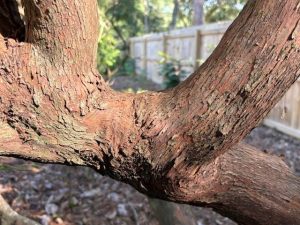
Sparkleberry bark and structure are attractive features in the landscape. Photo by Beth Bolles, UF IFAS Extension Escambia County.
The small tree is now about 12 feet tall and has never had any issues in the sandy, well drained soil. It can tolerate some moisture as long as the soil drains well. A grouping of trees from my neighbor’s lot keeps the plant in partial shade and we can often find sparkleberry specimens in the filtered light of woods. It can tolerate a sunnier location if that is the spot you have available for a small tree.
In addition to our enjoyment of this native tree, pollinators and other animals will appreciate the flower nectar, pollen, and berries. If you have a native nursery close to your home, be sure to ask for your own Sparkleberry if your site is suitable.
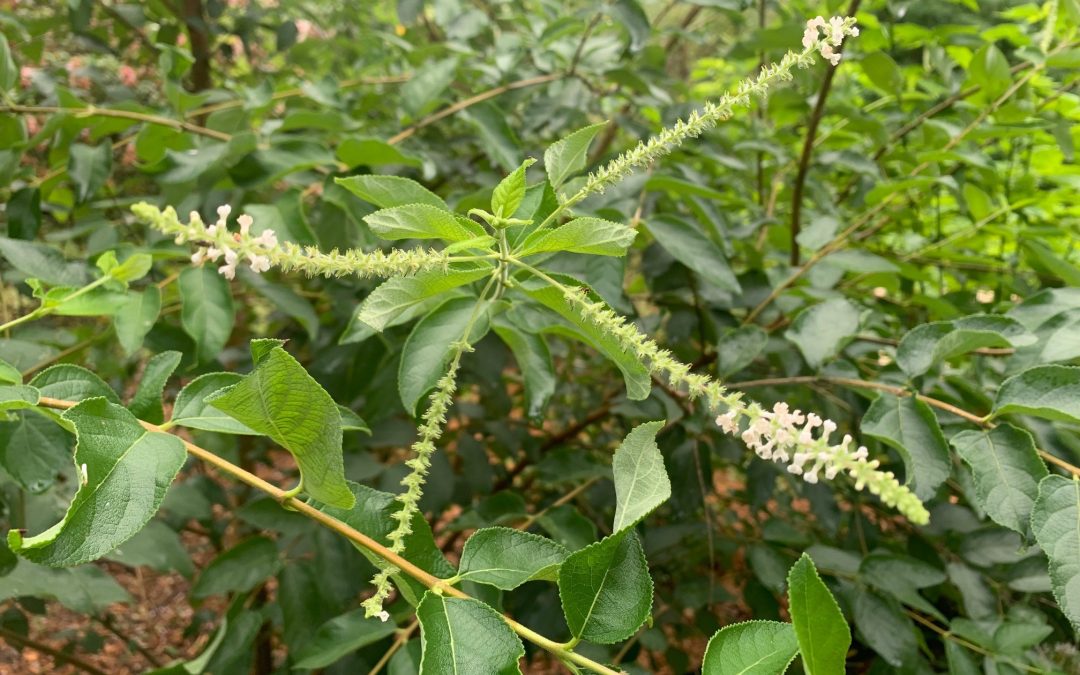
by Beth Bolles | Sep 4, 2024
Two years ago, the Escambia Master Gardener Volunteers were gifted with the flowering perennial Sweet Almond bush (Aloysia virgata). It has quickly become a favorite plant of volunteers and garden visitors due to its many attractive features.
Although, Sweet almond bush is not a Florida native, it is Florida-friendly plant for zones 8b -10b. Plants grow very large, from 6-10 feet with branching that can spread out in all directions. In North Florida, plants can be damaged by a freeze but either return from the base or from growing points higher on branches.
One of the best features are the fragrant white flowers spikes that will be present late spring through fall. Many types of pollinating insects will be attracted to the flowers, although sometimes flowers are too high on the plant for many of us to get a good look at pollinator details.
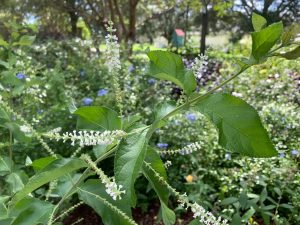
Sweet almond bush blooms. Photo by Beth Bolles, UF IFAS Extension Escambia County
We have plants both in full sun and partial shade that are performing well in the Escambia Demonstration Gardens. Plants do receive water when rainfall is lacking for about 5-7 days (or all of August this year in the Northwest Panhandle). You can shape your plant with a little light pruning during the growing season to keep branches a little more in bounds. Don’t forget to start a few new plants from these cuttings and then share a low maintenance plant with your neighbors.
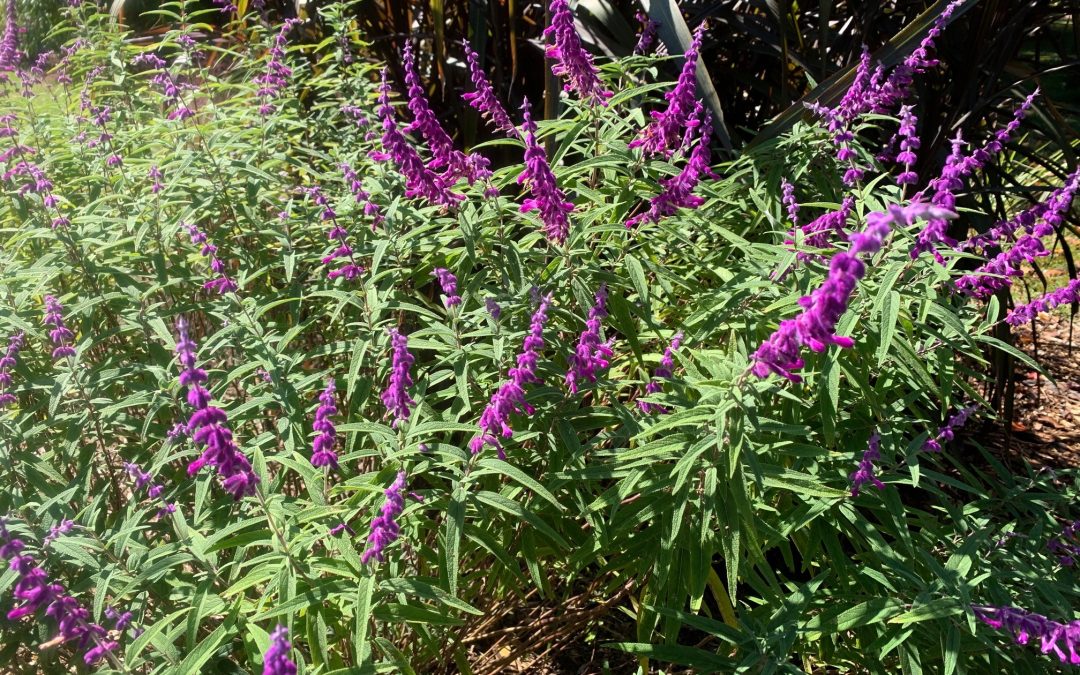
by Beth Bolles | Aug 20, 2024
Salvias are a popular group of plants for attracting pollinators and adding lots of color to the landscape. A unique salvia that offers velvety flowers is the Mexican bush sage, Salvia leucantha.
In our heat, Mexican bush sage can tolerate partial shade and likes average water with well drained soils. Plants will not overtake a spot only growing 2-4 feet. The velvety portion of the flower is a purple calyx with the flower petals emerging white or purple. Flower stalks will extend above the foliage to be available to many bees, butterflies, and hummingbirds.
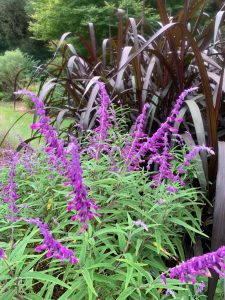
Mexican bush sage planted with ‘First Knight’ pennisetum. Photo by Bolles, UF IFAS Extension Escambia County.
During cold winters, plants can die back to the ground but often return each spring. It is always good to take a few cuttings for new plant starts just in case your plant dies back from heavy rains or drought conditions.
Mexican bush sage can be an accent plant in your garden or used in a small mass of 2-3 plants. Consider adding it with contrasting textures and colors so later summer flowers are easily visible.
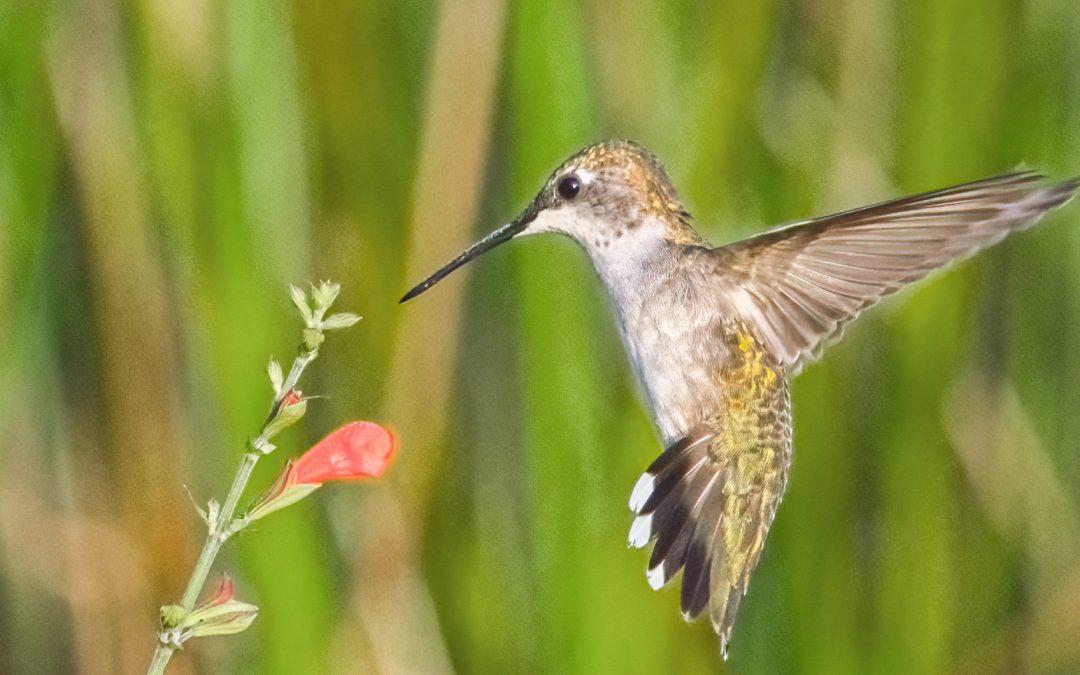
by Molly Jameson | Jun 5, 2024
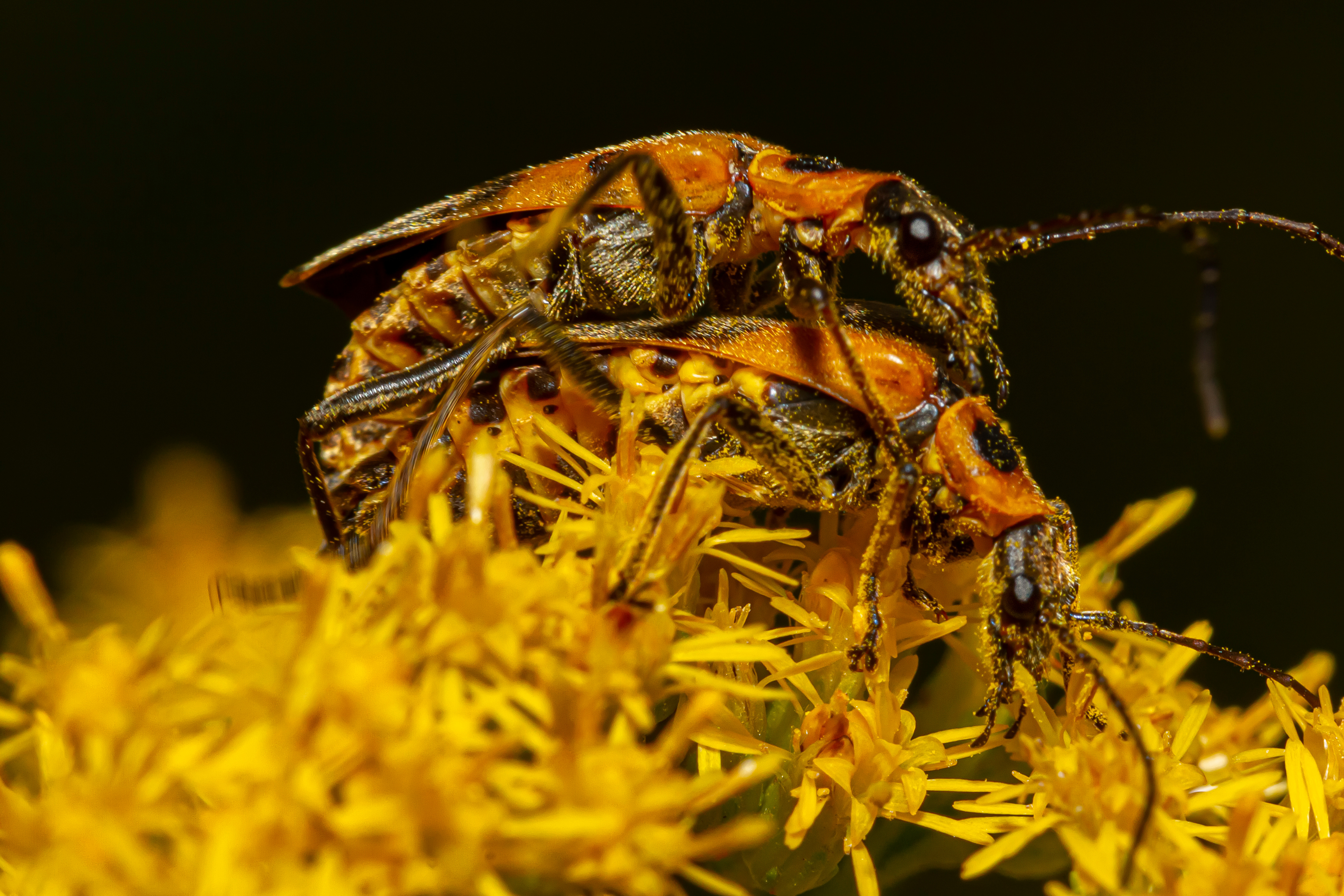
Goldenrod soldier beetles inadvertently transferring pollen while feeding on nectar and pollen grains. Photo by Grandbrothers, Adobe Stock.
Pollinators contribute to the reproduction of over 87 percent of the world’s flowering plants and are crucial for agriculture, with 75 percent of the different types of crops we grow for food relying on pollinators to some extent to achieve their yields. Perhaps most importantly, one-third of global food production is dependent on pollination.
While bees often take the spotlight in discussions about pollination, there’s a whole cast of lesser-known characters playing vital roles. From beetles, flies, ants, moths, and even birds and bats, a diverse array of creatures quietly ensures the fertility of our crops and the stability of our ecosystems.
Beetles as Pollinators
Beetles, often overlooked in the pollination process, play a crucial role as one of nature’s primary pollinators, especially for ancient flowering plants like magnolias and spicebush. These insects, which were among the first to visit flowers, are known as “mess and soil” pollinators due to their less-than-delicate approach. As they feast on petals and other floral parts, beetles inadvertently collect pollen on their bodies. They lack specialized structures for transporting pollen; instead, pollen grains adhere to their bodies as they move from flower to flower. The flowers that attract beetles tend to be large, bowl-shaped, and emit strong, fruity, or spicy scents to lure the beetles in. Despite their seemingly destructive behavior, beetles are essential for the reproduction of the plants they visit.

A fly lands on a saltbush, unintentionally aiding in pollination. Photo by Karan A. Rawlins, University of Georgia, Bugwood.org.
Flies as Pollinators
Flies, often dismissed as mere nuisances, are crucial pollinators. With their bustling activity around flowers, flies inadvertently transfer pollen from one flower to another as they search for nectar and other food sources.
Flies are particularly attracted to flowers with strong odors and dull colors, characteristics often overlooked by other pollinators. While they may not be as efficient or specialized as bees, flies make up for it in sheer numbers and ubiquity, contributing significantly to the pollination of a wide variety of plant species, including many crops essential for humans.
Moths as Pollinators
And then there are moths, the nocturnal counterparts of butterflies, silently pollinating flowers under the cover of darkness. Drawn to flowers with pale or white petals and strong fragrances, such as apple, pear, and cherry blossoms, moths play a role in pollinating various plant species, contributing to overall yield and quality of the harvest. Their long proboscis allows them to reach deep into flowers, accessing nectar sources that may be out of reach for other pollinators.
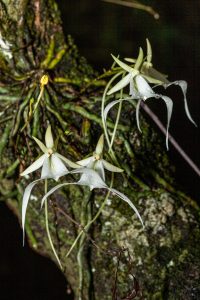
Ghost orchids (Dendrophylax lindenii) can provide shelter and nesting sites for arboreal ants, which in turn, may aid in pollination.
Ants as Pollinators
While ants are primarily known for their role as scavengers and defenders of their colonies, they also contribute supplementary to pollination of some plants in surprising ways.
In tropical forests, certain plants referred to as ant-plants or myrmecophytes, form close, sometimes obligatory partnerships with ants. These plants feature specialized hollow structures known as domatia, which serve as homes for ant colonies in exchange for protection and pollination services for the plant. Domatia vary by species, but can include stems, thorns, roots, stipules, petioles, or leaves. Some orchid species, such as the ghost orchid (Dendrophylax lindenii), which are native to Cuba and southwest Florida, provide shelter and nesting sites for an arboreal ant species called acrobat ants (Crematogaster ashmeadi). The ants, in turn, protect the orchids from herbivores and may aid in pollination.
Another strategy of some flowers is to develop nectaries on their exterior to entice ants, deterring other insects from stealing the nectar by accessing it from the side, thus compelling them to enter the flower in a manner more favorable for pollination. While ants can clearly contribute to pollination, researchers have also found that some ants secrete a natural antibiotic, which protects them from infections but harms pollen grains.
Birds as Pollinators
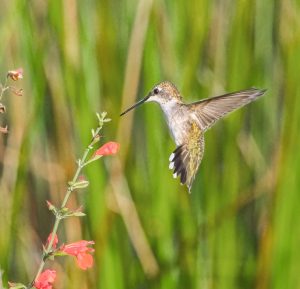
A juvenile male ruby-throated hummingbird serving as a pollinator as it flits from flower to flower, sipping nectar. Photo by Chase D’Animulls, Adobe Stock.
When we imagine pollinators, birds might not be the first creatures that come to mind. However, birds, comprising around 2,000 nectar-feeding species, play a significant role as pollinators among vertebrates.
Hummingbirds, with their tiny size and lightning-fast wings, are nature’s dynamos of pollination. Their slender bills and long tongues are perfectly adapted to extract the sugary nectar from flowers, inadvertently transferring pollen that adheres to their head and neck as they feed on other flowers. The ruby-throated hummingbird stands out as Florida’s prominent native bird engaged in plant pollination.
But it’s not just hummingbirds; other bird species, from sunbirds to honeyeaters, play their part in pollination too. Their behaviors, such as perching on flowers or probing deep into blossoms, can facilitate the transfer of pollen.
Bats as Pollinators
In the darkness of night, bats perform a vital ecological service: pollination. Particularly in tropical regions, bats have co-evolved with certain plant species, forming intricate mutualistic relationships. Surprisingly, over 500 plant species worldwide rely on bats for pollination, including important crops like agave, banana, cacao, guava, and mango.
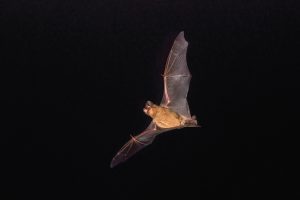
Even insect-eating bats, such as this Brazilian free-tailed bat, can inadvertently contribute to pollination as it feeds on insects within flowers. Photo by Phil, Adobe Stock.
In Florida, all native bats are insectivores, primarily preying on insects such as mosquitoes, moths, and beetles. However, recent research suggests that insect-eating bats may even outperform their nectar-feeding counterparts in certain cases when it comes to pollination efficiency. As these bats feed on insects inhabiting flowers, they inadvertently spread pollen during the process, highlighting the diverse and sometimes unexpected roles bats play in ecosystems.
Recognizing and conserving all pollinator species, from birds and beetles to bats and ants, is crucial for maintaining ecosystem balance and ensuring food security. By promoting pollinator-friendly practices and habitat conservation, we can safeguard the intricate web of life that sustains us all.








